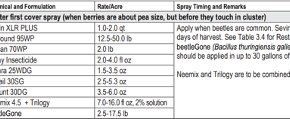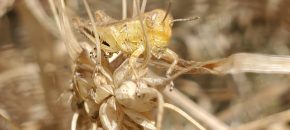
Blueberries: Spotted Wing Drosophila (SWD): Populations are increasing.
Continue reading...Rutgers Cooperative Extension
Cucurbit downy mildew has been reported on cucumber (6/16/21) and cantaloupe (6/22/21) in southern New Jersey. For more information on CDM and its control please click here. To track the progress of CDM please visit the CDM forecasting website. No reports of Late blight in the region. To track the progress of Late blight in […]
Continue reading...Based on our degree-day (DD) model for Sparganothis fruitworm, first eggs hatch at about 895 DD (see chart). As of June 27, Sparganothis has accumulated 991.5 DD (using April 15 as biofix). This indicates that eggs have started to hatch, and fruit will become susceptible to infestation since larval injury to fruit usually begins after […]
Continue reading...The NEWA (Network for Environment and Weather Applications) website managed by the New York state Integrated Pest Management (IPM) program can be found at http://newa.cornell.edu/. The website is easy to use and offers weather data as well as insect and disease forecasting (e.g., P-days for Early blight and BlightCast for Late Blight in potato, and […]
Continue reading...
June 26, 2021 A field of ready to harvest wheat was observed infested with 4th to 5th star grasshopper nymphs in Salem County. While waiting for positive identification from entomologists familiar with the differences in the nymp identification, these nymphs appear to be differential grasshoppers (Melanoplus differentialis). The uniform yellowish color of nymphs observed, is […]
Continue reading...Last Friday, Governor Murphy announced that the State has reached the goal of having 70% adults fully vaccinated. Meanwhile, many areas across New Jersey still see vaccination rate below 70%. In addition to the Atlantic City rodeo event announced yesterday, the NJ Dept of Health shared these additional vaccination events/sites that will occur throughout the […]
Continue reading...
